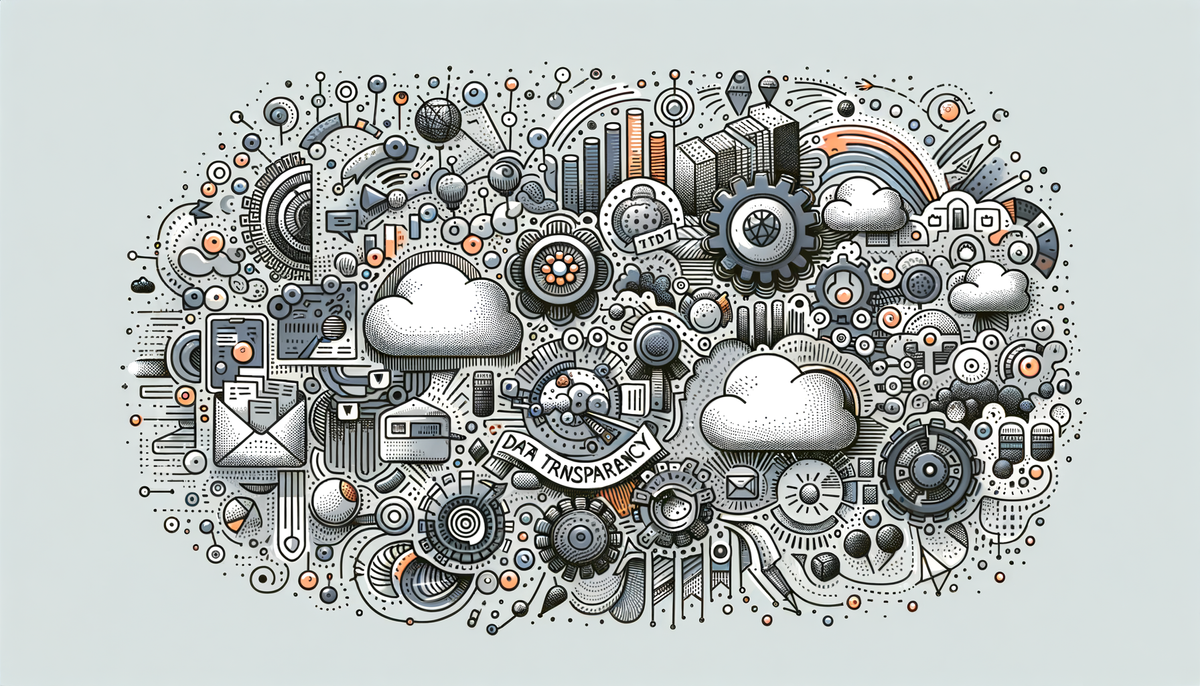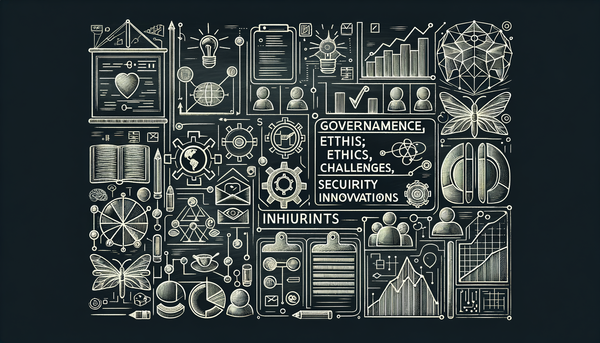AI News Podcast Update: Emotional Healing, Global Developments, and Innovations in AI

In a whirlwind of innovations, challenges, and unexpected twists—from a file-sharing platform defending user trust to AI tools offering comfort during personal loss—this update encapsulates a world where technology continually redefines our experiences, responsibilities, and global landscapes.
User Trust and Data Transparency in a Digital Age
The digital ecosystem is grappling with the delicate balance between innovation and user trust. Recently, WeTransfer found itself at the center of a storm when a minor update to its terms of service ignited concerns over the potential use of user-uploaded files to train artificial intelligence systems. Faced with a backlash largely from the creative community, WeTransfer quickly clarified that its platforms do not employ machine learning to process user content or sell sensitive data to third parties.
This defensive move is more than just a crisis management tactic; it is a signpost that transparency remains paramount in building durable relationships with users. By refining its terms to specify that uploaded files are used solely for operating and enhancing its services, WeTransfer joins other tech firms like Dropbox in prioritizing clarity. This trend highlights the growing public awareness and wariness over how data is being leveraged. As one expert once noted, "Trust is not given; it is earned," and in today’s age of rapid AI advancement, companies must strive to secure it by demystifying how user data is treated.
For readers interested in diving deeper into tech developments, check out our detailed discussions on recent developments at AI Podcast Update: Engaging Developments in AI on AI.Biz.
AI for Emotional Healing and Personal Wellbeing
Technology is not just about enhancing financial or operational outcomes; it also touches the most personal aspects of our lives. An emerging trend is the use of AI-driven therapy tools designed to help individuals navigate emotional turmoil. In one heartfelt op-ed, a person recounted how an AI therapy tool provided unexpected solace after a devastating personal loss. Although the details surrounding its potential regulatory challenges in Illinois remain under debate, stories like these underscore the transformative impact of AI in emotional healing.
This intersection of personal experience and advanced technology demonstrates AI’s capacity to deliver not only data-driven insights but also compassionate care. It reminds us that behind every innovative solution is a human story—a narrative of loss, hope, and recovery. In a manner reminiscent of classic literature where technology meets human fragility, these tools are quietly revolutionizing mental health support.
Hardware Breakthroughs and Inference Optimization
As the boundaries of artificial intelligence expand, robust hardware partnerships have become crucial in delivering on its vast potential. Positron AI, for instance, recently secured $51.6 million in an oversubscribed Series A investment to accelerate the production of inference-optimized hardware. This capital injection is a strong vote of confidence in the hardware that underpins AI's ability to process complex decisions in real time.
Furthermore, fascinating developments in portable computing have emerged. Leaks about NVIDIA's upcoming N1x chip for ARM laptops suggest a significant leap in efficiency. Despite boasting as many CUDA cores as an RTX 5070, early performance projections point toward a benchmark akin to an RTX 2050 at the moment. The chip’s design, which features dual 10-core Grace CPU clusters working in tandem with several streaming multiprocessors, could eventually lead to laptops that deliver impressive graphic performance while maintaining energy efficiency.
These innovations underscore how advancements in AI are tightly interwoven with hardware breakthroughs. At AI.Biz, our recent piece explores similar trends in AI innovation that are transforming the computing landscape.
Innovative Consumer Applications: The Story of AutoMix
In the consumer tech arena, artificial intelligence is steadily transforming everyday experiences. A timely example is Apple Music’s new AutoMix feature, which captivated tech enthusiasts with its potential to emulate a live DJ experience by seamlessly mixing tracks. Revealed during the iOS 26 beta, AutoMix instantly became a talking point due to its striking capabilities paired with noticeable imperfections. While the feature’s ability to match beats and create fluid transitions has been lauded, many users have noted that songs occasionally get chopped short, leaving fans longing for unabridged musical journeys.
This blend of innovation and teething troubles illustrates the iterative nature of AI-driven products—where initial excitement often meets the challenge of perfect execution. As the technology matures, consumer expectations press for a balance between creative algorithms and the raw, uninterrupted experience that art demands.
In our ongoing series on AI innovations, we invite readers to experience these emerging technologies firsthand and share their insights on how such tools are reshaping entertainment.
Agentic AI: Redefining Customer Engagement
One of the most riveting shifts in artificial intelligence is the evolution from reactive systems to proactive, agentic AI. Unlike traditional AI algorithms that passively react to input, agentic AI adopts a more autonomous approach to solve problems and enhance customer experience. By empowering businesses to predict customer needs and personalize interactions, agentic AI transforms standard transactions into dynamic, context-aware experiences.
Industries ranging from telecom to healthcare benefit by integrating this technology. In telecom, the proactive resolution of customer issues is accelerating service speeds, while in finance, real-time fraud detection is becoming a cornerstone of security. It is here that we see technology truly stepping over from convenience into a strategic partner in everyday transactions.
The ethical dilemmas accompanying such sophisticated AI are not lost on experts. Transparency, risk management, and the human touch remain essential to create a harmonious balance. At AI.Biz, our article on legal and technological showdowns elaborates on these challenges in context.
"The pace of progress in artificial intelligence is incredibly fast." – Elon Musk, emphasizing that rapid innovation also calls for vigilant oversight.
Transforming Weather Forecasting with AI
The realm of weather forecasting provides a fascinating case study for the practical applications of machine learning. Traditional weather models have long relied on vast data sets processed by supercomputers, yet they still struggle with hyper-local predictions that can have life-altering consequences. Recently, major tech giants have launched AI-driven weather models that can deliver forecasts in mere minutes using historical data and advanced computational techniques.
While these AI models show promise—such as Google's GraphCast outperforming legacy models in predicting atmospheric pressure—they are not without their caveats. The inherent chaos of localized weather phenomena means that while AI excels at detecting large-scale trends, it frequently stumbles on subtleties. These limitations are a reminder that while machine learning holds remarkable potential, its best use may be as a complementary tool alongside traditional methodologies.
Experts predict that the future of meteorology will lie in a hybrid approach, marrying the rigour of physics-based models with the predictive agility of AI. Innovations like these, featured in our deep dive on emerging AI challenges, will likely shape how governments and businesses prepare for extreme weather events.
Global Dynamics and the Geopolitics of AI
On the international stage, artificial intelligence is not only a tool of innovation but also an arena for geopolitical maneuvering. Amid rising global tensions and competitive fervor, China is poised to establish a new global AI group, signaling yet another chapter in a long-standing rivalry with the United States. This development, along with Nvidia's recent decision to resume sales of its high-performance AI chips to China, reflects a gradual thaw in U.S.-China technological tensions.
Nvidia’s strategic move holds significant implications for global trade dynamics. The resumption of AI chip exports to China comes after prolonged export restrictions, and it suggests that tech diplomacy might be opening new channels for mutual growth. Jensen Huang’s efforts to navigate these choppy international waters demonstrate that even amid political differences, the pursuit of technological progress can forge unlikely alliances.
The trends in this domain remind us of an old adage where competition drives innovation. As countries, companies, and policy makers balance strategic interests with the demands of an increasingly digital world, the global AI landscape is poised for transformative changes.
The Dark Underbelly: Cybersecurity in an AI-Driven Era
While the promise of AI often highlights progress and innovation, it also brings to light the darker aspects of its application. A striking case emerged from Arizona, where an ordinary household unwittingly became the epicenter of a sophisticated North Korean cyber operation. In this instance, a local resident, striving to secure remote work, was ensnared in an elaborate network that orchestrated identity theft and cyber-espionage. The incident, involving over 90 company-issued laptops and millions of dollars siphoned from major corporations, underscores the potential for AI and related technologies to be weaponized by hungry cybercriminals.
This tale of digital deceit is a cautionary narrative in an era where the boundaries between legitimate remote working and cybercrime are increasingly blurred. As AI systems become more integrated into everyday operations, the need for stringent cybersecurity measures has never been more critical, and companies must invest significantly in risk mitigation strategies.
Innovation on the Go: AI in Portable Computing
The future of portable computing is being rewritten with the integration of AI technologies that seamlessly blend high performance with energy efficiency. Leaked details about NVIDIA’s N1x chip reveal an ambitious merge of CPU and GPU functionalities into a single, power-conscious SoC, tailored for the next generation of ARM laptops. With a design that promises to challenge norms by equipping mobile devices with desktop-level processing capabilities, this innovation could revolutionize how and where high-end computing is deployed.
Despite current performance limitations—largely due to power and frequency constraints—the sheer possibility of a lightweight laptop that delivers impressive graphics and robust performance builds excitement among tech enthusiasts. Such advancements could transform sectors like mobile gaming, content creation, and on-the-go productivity, signaling an era where portability and power are no longer mutually exclusive.
Global Market Resurgence: Nvidia and the Revival of AI Chip Sales
Nvidia’s recent announcement to recommence AI chip sales to China is a watershed moment that exemplifies the delicate dance of global commerce and national security. After overcoming export restrictions that stemmed from concerns over military applications, the American tech giant is once again engaging with the lucrative Chinese market. This move not only reflects changing geopolitical tides but also reinforces the importance of balancing strategic interests with global market realities.
In this rapidly evolving environment, companies relying on AI-driven technologies must stay agile. Nvidia’s move could pave the way for further market realignments, where innovation and diplomatic engagement intersect. It stands as a potent reminder that in our interconnected global economy, the relentless pace of technological advancement is intertwined with political negotiations and regulatory decisions.
As our world races toward increasingly integrated technologies, one cannot help but marvel at the old proverb, "In the midst of chaos, there is also opportunity." This sentiment aptly captures the current state of affairs, where the resurgence of AI chip sales is a beacon of potential amid a turbulent geopolitical sea.
Embracing the Future with a Balanced Perspective
From ensuring transparent data practices and harnessing AI for personal healing to redefining customer experiences and reshaping global trade, the landscape of artificial intelligence is both broad and deep. The juxtaposition of groundbreaking innovations with cautionary tales—such as cybersecurity breaches and regulatory challenges—underscores the complex, multifaceted journey ahead.
As we move forward, it is essential to foster collaboration between stakeholders, from tech innovators and business leaders to policy makers and end-users. Only through such concerted efforts can we unlock the full potential of AI while mitigating its inherent risks.
For those who are eager to delve further into these evolving topics, feel free to explore more insightful updates on our website. Whether you're a tech enthusiast or a business professional, the future of AI awaits your engagement and exploration.




